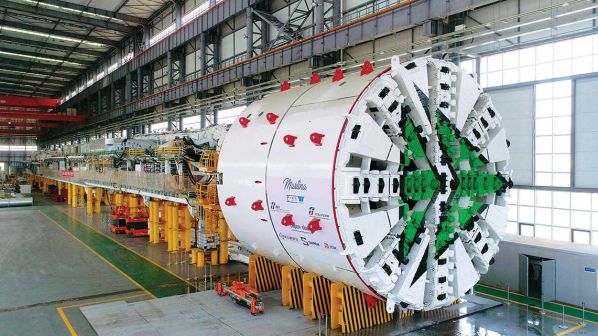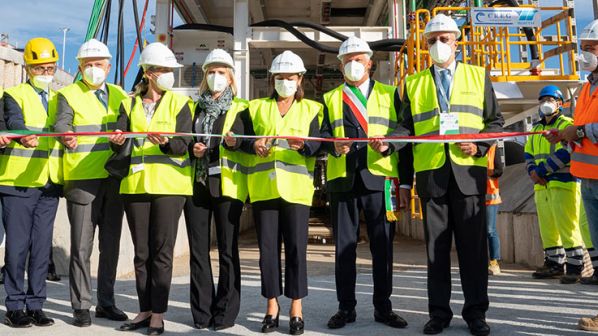The new line will run from west to east from Mazzano to the east of Verona, crossing the Lombardy and Veneto regions, and serving 11 municipalities in the provinces of Brescia, Verona and Mantua.
The new line follows the existing A4 motorway for 30km of its length and shares 8km of the alignment with the existing Milan - Venice conventional line. It involves the construction of 45.5km of new high-speed line, 10.2km of which will run in tunnel and 900m on viaduct.
Martina, which was supplied by China Railway Engineering Equipment Group (CREG) and is the company’s first export to Europe, will bore the 7.95km dual-bore tunnel from Lonato del Garda to Desenzano del Garda. The tunnel is described by infrastructure manager Italian Rail Network (RFI) as the most complex part of the route. The project also includes construction of the 3.36km Frassino tunnel and 3.7km San Giorgio tunnel.
As well as the 48km line, the project also includes a 2.2km connection to the Verona - Brenner main line. The line will be designed for a maximum speed of 300km/h and will be electrified at 2x25kV and fitted with ETCS Level 2. The line is scheduled to be completed in 2023.

The ceremony was attended by Italy’s minister of infrastructure and transport, Ms Paola De Micheli, the councillor for infrastructures of the Veneto Region, Ms Elisa De Berti, the councillor for infrastructures of the Lombardy Region, Ms Claudia Terzi, and the mayors of the municipalities served by the new route. They were joined by Mr Gianfranco Battisti, CEO of Italian State Railways, Mr Maurizio Gentile, CEO of Italian Rail Network (RFI), and Mr Aldo Isi, CEO of Italferr.
The Italian government is investing €2.499bn in the project, with the contract with the Cepav Due consortium, which is building the line, worth approximately €2.16bn. The consortium is made led by Saipem, which holds a 59% stake, Impresa Pizzarotti with about 27% and ICM Group with about 14%.
The Cepav Due consortium was also involved in constructing the 39km Treviglio - Brescia high-speed line and 11.7km of connecting lines which opened in December 2016. The Milan - Treviglio section opened in 2007. The three sections form part of the planned Milan - Verona - Venice high-speed line.
For detailed data on high-speed projects from around the world, subscribe to IRJ Pro.

